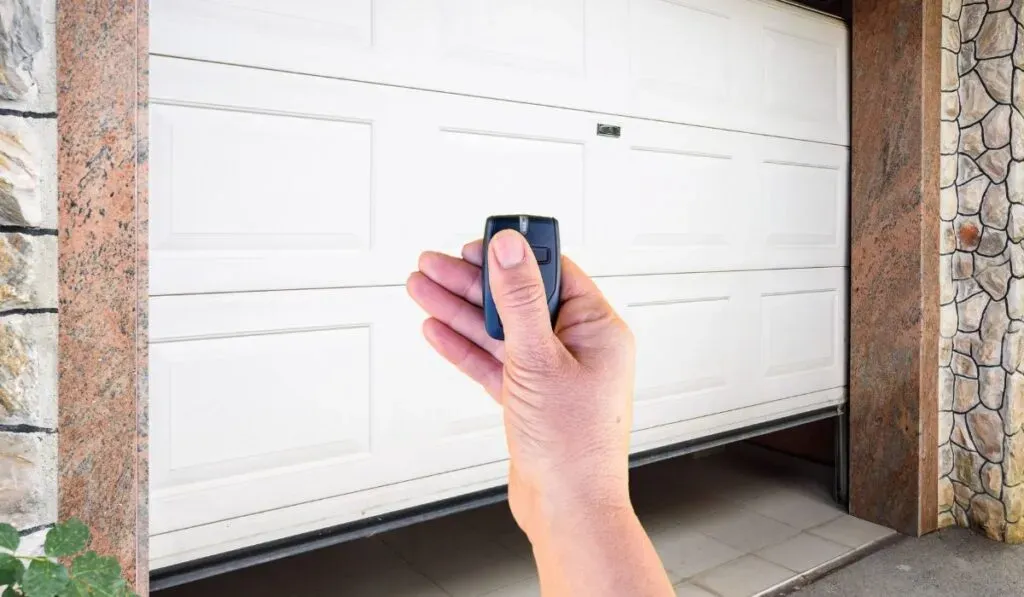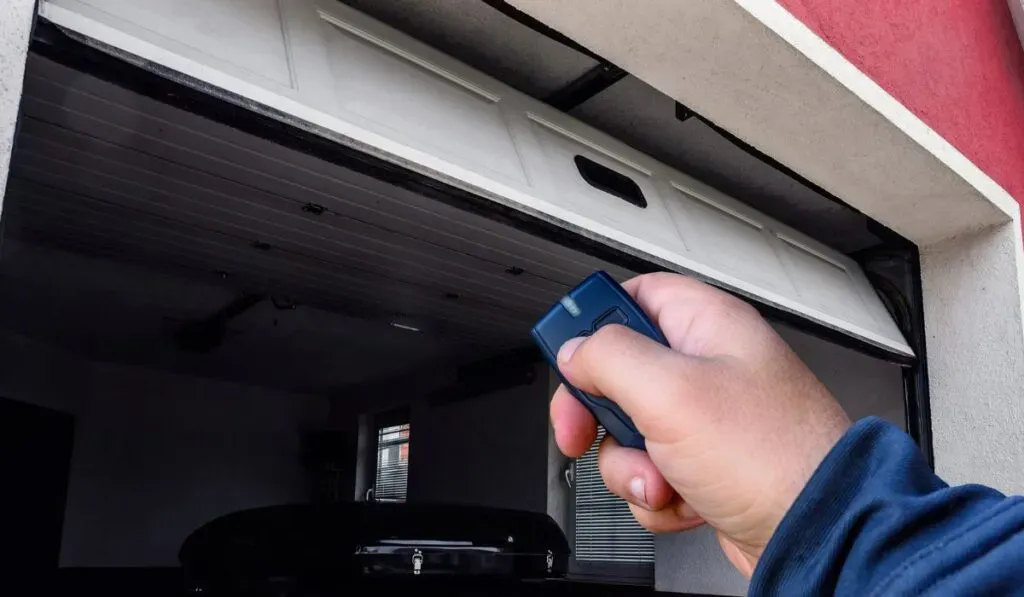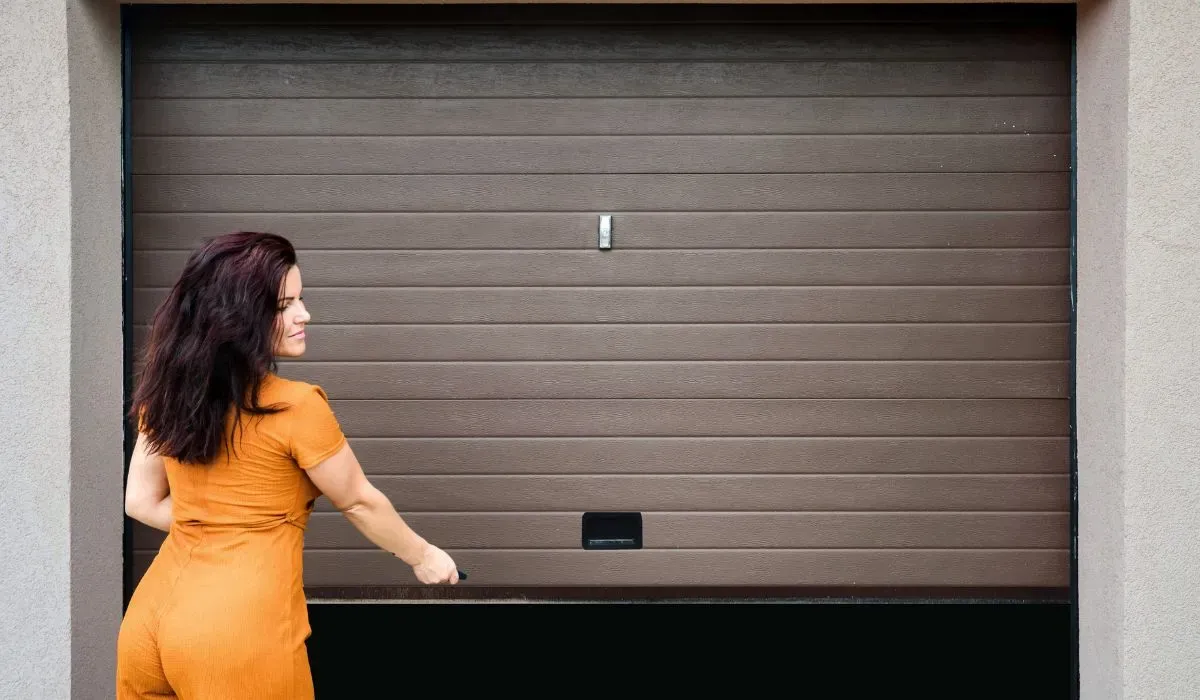If your garage door won’t close unless you hold the button, it is often due to blocked or dirty sensors that need cleaning or realignment. Checking the inside door closer and ensuring the garage door opener functions properly can solve this common sensor problem.
Quick Fixes for a Garage Door That Won’t Close Unless You Hold the Button
Does your garage door only close when you press and hold the button? That’s annoying! Many people face this. The good news is you can fix it yourself sometimes. Before calling a pro, try a few quick things.
The Usual Suspects: Sensor Issues
Most times, the problem comes from the garage door safety sensors. These are near the bottom of the door tracks. They stop the door from closing if something blocks the path. But sometimes they cause trouble even when there’s nothing wrong.
Here’s what often goes wrong:
- Sensors Blocked: Dirt, dust, or cobwebs can get in front of sensors.
- Sensors Misaligned: Sensors must face each other straight on to work properly. If sensors think something is blocking them, your door won’t close unless you hold down the button.
Dirty or Misaligned Sensors: The Most Common Culprit
Dirty lenses on photo-eye sensors cause lots of issues. It’s usually easy to fix too. Try this:
- Look at both sensors closely for dirt or stuff blocking them.
- Wipe lenses gently with a soft cloth and some mild cleaner.
- Make sure sensors point right at each other without tilting.
Also, check if the wires to these sensors are loose or damaged.
Is It Time for a Reset?
Sometimes your garage door opener just needs a power reset. Here’s how:
- Unplug your garage door opener from power.
- Wait about 30 seconds.
- Plug it back in and test if the door works better.
This simple reset can clear errors in the system and stop your door from needing you to hold down the button.
Fixing sensor issues first usually solves why your garage door won’t close without holding the button down.
Understanding Your Garage Door Opener’s Safety Features
Garage door safety sensors help keep people safe. These sensors, called photo-eyes or safe-to-beam sensors, spot anything in the door’s path. If they see something, they stop the door from closing.
The automatic reverse feature works with the sensors. It makes the door go back up if something blocks it.
Most garage door openers follow UL 325 safety standards. These rules say how sensors and automatic reverse must work to protect users. Meeting garage door opener safety standards means your system stops fast when it hits an obstacle.
Sometimes, your garage door won’t close unless you hold the button down. That often means a problem with these safety features. Knowing how they work helps you find the issue quicker.
Checking Sensor Alignment and LED Indicators
Photo-eye sensor alignment matters a lot. The sensors face each other across the doorway, about 6 inches off the ground. If one moves or its lens gets dirty, it might not “see” the other one.
Try these steps:
- Clean lenses: Wipe dirt or webs off both lenses with a soft cloth.
- Check alignment: Make sure both photo-eyes point straight at each other with no blocks.
- Look at LED lights:
- A solid green or amber light usually means all is well.
- A flashing LED light often shows misalignment or blockage.
- A solid yellow light can mean normal, but watch for changes.
Brands like LiftMaster and Chamberlain use green or amber LEDs. Genie Safe-T-Beam might use different colors—check your manual to be sure.
Sometimes, dirty lenses make it seem like sensors are misaligned because blocked beams stop signals even if the sensors line up right.
Battery Issues and Power Supply
If your garage door acts weird, check the motor batteries first.
- Change batteries in your garage door remote often.
- Look inside the opener for loose or broken wires.
- Make sure wiring is intact and connected well.
- Check power supply connections; bad voltage can cause sensor trouble.
Keeping all wires and power steady helps your opener work right beyond properly. Dirty is just cleaning and aligning photo-eyes.
By knowing these safety features and simple fixes, you can solve most problems when your “garage door won’t close unless I hold the button.” For info on resetting lock modes or changing force settings per UL 325 rules, see your manual or ask a pro.

Cleaning and Realigning Your Sensors: A Step-by-Step Guide
If your garage door won’t close unless you hold the button, the problem might be your garage door safety sensors. These little photo-eye sensors can get out of line or get dirty. That stops them from sending the signal to close the door safely.
Why sensor issues happen
- Photo-eye sensor misalignment: Sensors need to face each other straight properly. Dirty lenses: Dust, spider webs, or dirt can cover the sensor lenses and block signals.
- Sensor obstruction: Leaves, sticks, or other stuff can sit in front of sensors and cause trouble.
- Sun glare on sensors: Bright sun can confuse sensors and stop them from working properly.
How to clean and realign your garage door sensors
- Find the two photo-eyes near the bottom of each side of your garage door tracks.
- Check if their lenses are dirty or smudged. Use a soft cloth with some water to wipe them gently. Don’t use harsh cleaners.
- Look for anything blocking between the two sensors and take it away.
- Make sure both sensors point straight at each other—no tilting up or down.
- If they’re off, adjust their brackets slowly until their LED lights show solid green or amber (this depends on your brand).
- Test by pressing the remote once. The door should close by itself if everything’s aligned.
Cleaning your photo-eyes often stops false errors from dirty garage door sensors and keeps things running smoothly.
Replacing the Batteries in Your Garage Door Opener
Sometimes your remote control acts weird because its battery is weak.
When to replace remote control batteries
- The opener only works if you keep holding buttons.
- The remote’s LED light is dim or doesn’t light at all when you press it.
How to change your garage door remote battery
- Open the battery compartment on your remote with a small screwdriver or slide open the latch.
- Take out the old batteries carefully. Notice how they are put in (+/-).
- Put in new batteries like the ones in your manual (usually CR2032 or AAA).
- Close the compartment tightly and try the remote right away.
Changing batteries often keeps good contact between your garage door opener and remote.
Adjusting the Force/Limit Settings on Your Garage Door Opener.
Wrong force or limit settings often cause safety features to stop your garage door from closing unless you hold the button. These controls decide how much power the motor uses and where it stops when opening or closing.
Here’s how to fix them safely:
- Find your opener’s manual or look online for instructions on force adjustment and limit switch calibration.
- Locate controls called “Force” or “Motor Force Limits.”
- Turn up the heat little by little until the door closes smoothly without flipping back.
- Set limit switches so they stop at exact spots—this keeps a good balance between fully open and fully closed.
- Test open-close cycles after each change to check if it works correctly. Garagedoor force settings protect parts and meet safety rules made to keep people safe from sudden door closings.
If you’re unsure, get help from someone who knows brands like LiftMaster or Genie well.
Addressing Lock/Vacation Mode Issues
Sometimes your garage won’t close because it’s stuck in lock mode or vacation mode. This mode blocks automatic closing on purpose to keep things secure while you’re away.
Try resetting like this:
- See if vacation lock mode is on by checking the lights on your wall console or remote.
- Hold buttons named “Lock” or “Vacation” for a few seconds until indicator lights change color—for example, the green light goes off means the reset is done.
- Some systems need unplugging for a moment before lock modes reset fully.
Resetting helps avoid mix-ups between user commands and built-in locks meant for when you’re gone long time, but can block normal use otherwise.
Signs You Should Call a Garage Door Professional
Knowing when to call someone helps avoid wasted time and keeps you safe. Get help if you notice any of these signs:
- The garage door won’t close unless I hold the button down the whole time.
- The door just won’t close, even when nothing blocks it.
- There’s a flashing LED light on your sensors (this usually means an error).
- A solid yellow light shows on LiftMaster or Chamberlain sensors, meaning trouble with the sensor.
- The photo-eyes look out of line even after cleaning.
These signs often mean there are wiring problems, broken sensors, or opener issues. A pro should check them out.

Regular Maintenance to Keep Your Garage Door Running Smoothly
A garage door that works well makes life easier. You don’t want it to get stuck or only close when you hold the button, right? Here’s what to do:
- Garage Door Opener Maintenance Tips: Check the motor and batteries on your opener often. Wipe sensors gently with a soft cloth. Dirt can block signals and cause trouble.
- Garage Door Hardware Maintenance: Look at hinges, bolts, and brackets for rust or looseness. Tighten anything that feels wobbly.
- Garage Door Track Lubrication: Use silicone-based lube on tracks and rollers every six months. Avoid grease—it collects dust and gunk.
- Garage Door Spring Adjustment: Springs keep the door balanced. If they are worn out or uneven, your door may act weirdly. Let a pro handle spring adjustment because it can be dangerous.
- Door Roller Carriers: Rollers should roll smoothly and quietly. Change cracked or worn ones fast.
- Garage Door Maintenance Checklist: Make a checklist with these tasks. Do it twice a year to catch problems early.
Doing these things regularly helps your garage door work right without forcing you to hold the button down.
Understanding UL 325 Safety Standards for Garage Doors
UL 325 is a safety rule made for garage doors and their openers. It keeps users safe from harm.
Here’s what UL 325 says:
- Doors must stop and reverse if something blocks them while closing.
- Safety sensor obstruction detection means sensors must be clean and aligned correctly.
- New openers in North America have to meet UL 325 rules before you install them.
Safety Precautions When Working with Your Garage Door
Working on your garage door can be risky if you’re not careful. Follow these steps to stay safe:
- User Safety Disclaimer: Don’t try to fix springs yourself—they hold strong tension that can hurt you badly.
- Emergency Garage Door Release Procedure: Learn how to use the manual release cord safely during power failures or if the door gets stuck.
- Emergency Repair Procedures: If your opener only works while holding the button, unplug it before checking sensors or wiring.
- Safe-to-Beam Sensor Awareness: Keep photo-eye sensors clean and aligned so they detect objects that block the door from closing automatically.
- Pressing and Holding Button Safely: Pressing and holding the button turns off some safety features for a moment. Only do this if really needed and with care.
These steps help protect you while keeping your garage door running smoothly.
For tips on fixing common problems like sensor misalignment or resetting lock mode, see our other guides: [Opener Repair Guide], [Opener Maintenance Tips], and [Emergency Repair].
FAQs
Why does my garage door sensor show a blinking LED light?
A blinking LED usually means sensor misalignment or a sensor blockage error. Check for dirt, obstructions, or wiring issues.
How do I reset the garage door lock mode?
Press and hold the “Open” and “Close” buttons on your control panel for about 10 seconds until the lights flash, then release.
Can sunlight affect my garage door sensors?
Yes, sunlight interference can cause sensor malfunction. Adjust sensor angle or use shading to reduce glare.
What causes garage door sensor wiring problems?
Wires can get loose, frayed, or broken from wear, weather, or accidental damage along the door frame.
How do I adjust force settings on my garage door opener?
Locate the force adjustment screws on your opener motor. Turn them slightly to increase or decrease closing power.
What does a solid yellow light on LiftMaster sensors indicate?
It signals a problem with sensor alignment or wiring that needs inspection and fixing.
Is it safe to bypass safety features like photo-eye sensors?
No. Bypassing safety features risks injury and violates UL compliance standards. Always keep sensors functional.

